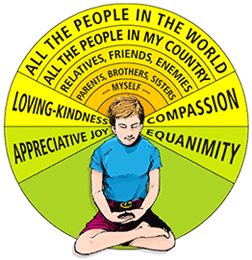As the poet Thich Nhat Hahn sees the sky in a piece of paper, the baker sees the world in a cookie -- here are the people who grew the things that went into the Earth Balance vegan butter and those who came up with the perfect blend of gluten-free flour in Pamela's Artisanal flour mix. Here is the extraordinary interdependence of science and ancient grains and my grandmother's cookie cutters, all in one extraordinary bite.
It's a story of ritual and lineage, of causes and conditions, of interdependence and impermanence, fame and ill repute.
Cookies.
You can practice mindfulness while brushing your teeth, Thich Nhat Hahn says. You can experience the truth of the whole of the buddhadharma while baking cookies: the suffering that rises when you are attached to the idea that things will happen a certain way and that the cookies will look like the picture in the cookbook; the attachment to a self that earns praise or blame for the results; impermanence -- the whole point of all the effort that goes into making cookies is that they will disappear. The paramitas are there: Generosity, proper conduct (I choose to use vegan ingredients), patience, exertion, concentration.
Buddhism isn't about how long you sit on a cushion or how many mantras you say, it's about how you walk in the world -- or do the dishes or make cookies or answer the phone. And that, to me, is the beauty of it. Don't believe anything just because a teacher -- even the Buddha -- said it. Test it.
There are lots of books that show how cooking illuminates the dharma -- Edward Espe Brown's cookbooks (they come with commentary) or Roshi Bernie Glassman's Instructions to the Cook are some of my favorites. This is from The Chocolate Cake Sutra by Geri Larkin.
A melt-in-your-mouth chocolate cake is the perfect metaphor for where we can land if we introduce the correct ingredients into our lives. When the ingredients merge and melt together, we become spiritual warriors, able to take the slings and arrows of planet life in stride, with grace and a grin.






